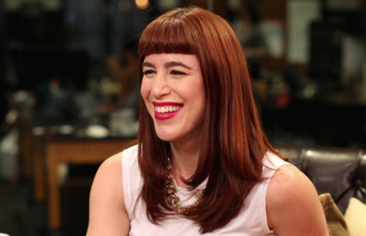Why Everyone Is Sharing This Two Step Beach Body Guide for the 4th of July

By:
This weekend, over 40 million Americans will travel around the country to partake in Independence Day barbecues and fireworks, and no doubt many will be heading to the beach. In the lead-up to 4th of July festivities, magazines feature beach body guides galore—diet and fitness regimes that promise to help you shed a few pounds to don a tiny bathing suit just in time for America’s birthday.
As routine as these guides may be, they’re predicated on the idea that only certain bodies are good bodies, and every body is better, thinner. “The notion tells us that you need to work on your 'beach body' because your body, in its current form, isn't good enough to be seen at a place where people typically dress down,” Matt Joseph Diaz, a body positive advocate, told ATTN:.
But, this year more people are embracing a simple two-step beach body guide, thanks to the work of the body positivity movement.
For decades, fat activists in the body positivity movement have been working to dismantle and diversify mainstream beauty ideals. The popularity of the two-step beach body meme signals that the movement has reached a tipping point where more people are standing up “to say ‘there is no one right way to have a body,’’ Bevin Branlandingham, the founder of Queer Fat Femme, told ATTN:. “This feels like a win to have more people embracing that having a beach body is just to be at the beach,” she added.
The popularity of this come as you are ethos is, in part, a result of social media. While mainstream ads and images often feature thin, white, able-bodied, and cis gender people, platforms like Instagram and Facebook allow individuals to curate the kinds of images they want to see. In turn, it makes it easier to find affirmation, according to Branlandingham, who also teaches the Fat Kid Dance Party at Everybody Gym in Los Angeles. The gym prides itself on offering a safe space for a diverse clientele to work out and commune.
Self-acceptance at the beach doesn't just extend to size. It includes all kinds of diversity, from age, to race, to ability, to gender identity, and sexuality.
Though size gets a lot of focus, body positivity is about fighting other forms of oppression that dictate how certain bodies are treated by society. Or, when certain bodies aren’t represented at all. “Disabled people are often invisible in so much of media,” Danielle Perez, a comedian, told ATTN:. A decade ago, Perez said she would have been “freaked out” to pose in a bathing suit. “By following a lot of these different Instagram accounts, my idea about what I think is beautiful is expanding. I’m better able to accept my body because I’m not the outlier,” she said.
Similar to Perez, Topher Gross, a trans activist, wasn’t always comfortable stepping out on the beach in a bathing suit. “When I was younger, before I transitioned, and everyone was wearing one or two piece bathing suits, I would always cover my body up,” Gross, a co-founder of the clothing brand Estrogentleman, told ATTN:. “There’s not a lot of swimsuits available for gender nonconforming folks or people who don’t fill out a swimsuit in a one way or another,” he added.
Other beauty ideals extended to Gross’s discomfort, like the pressure to shave. In addition to lithe bodies, mainstream bathing suit advertisements rarely feature hair, birthmarks or other so-called imperfections. “People who have hair on their body, regardless of their gender, are looked at as gross or unattractive or not sexy… Sometimes people are hairy and that should just be cool,” Gross, who’s also a hair stylist, added.
As the adage goes: if you can’t see it, be it. In his own body positive activism, Diaz has made it a point to be visible because he didn’t see other aspects of his identity represented in the media. “People of color are underrepresented in the body positive community as they are in media as a whole, and so putting that at the forefront of my identity as a body positivity activist of color has become increasingly important to me,” Diaz told ATTN:.
Wearing a bikini or a Speedo doesn't have to happen overnight. Learning to embrace your body can be a process.
The two-step "guide" to having a beach body is taking off because it's freeing and affirming, according to Gross, yet it may be easier said than done. The path to body acceptance can take time. Branlandingham recommended starting with baby steps to begin embracing your body at the beach. First, start by curating your feed on Instagram so that you see images that reflect you. Then, experiment with clothing, like wearing a tank top when you’re at home. Finally, find people who support you and are down for a body positive trip to the beach. “Just do it...Seek out people who also are embracing themselves and wanting to love themselves the way they are," Perez agreed.
